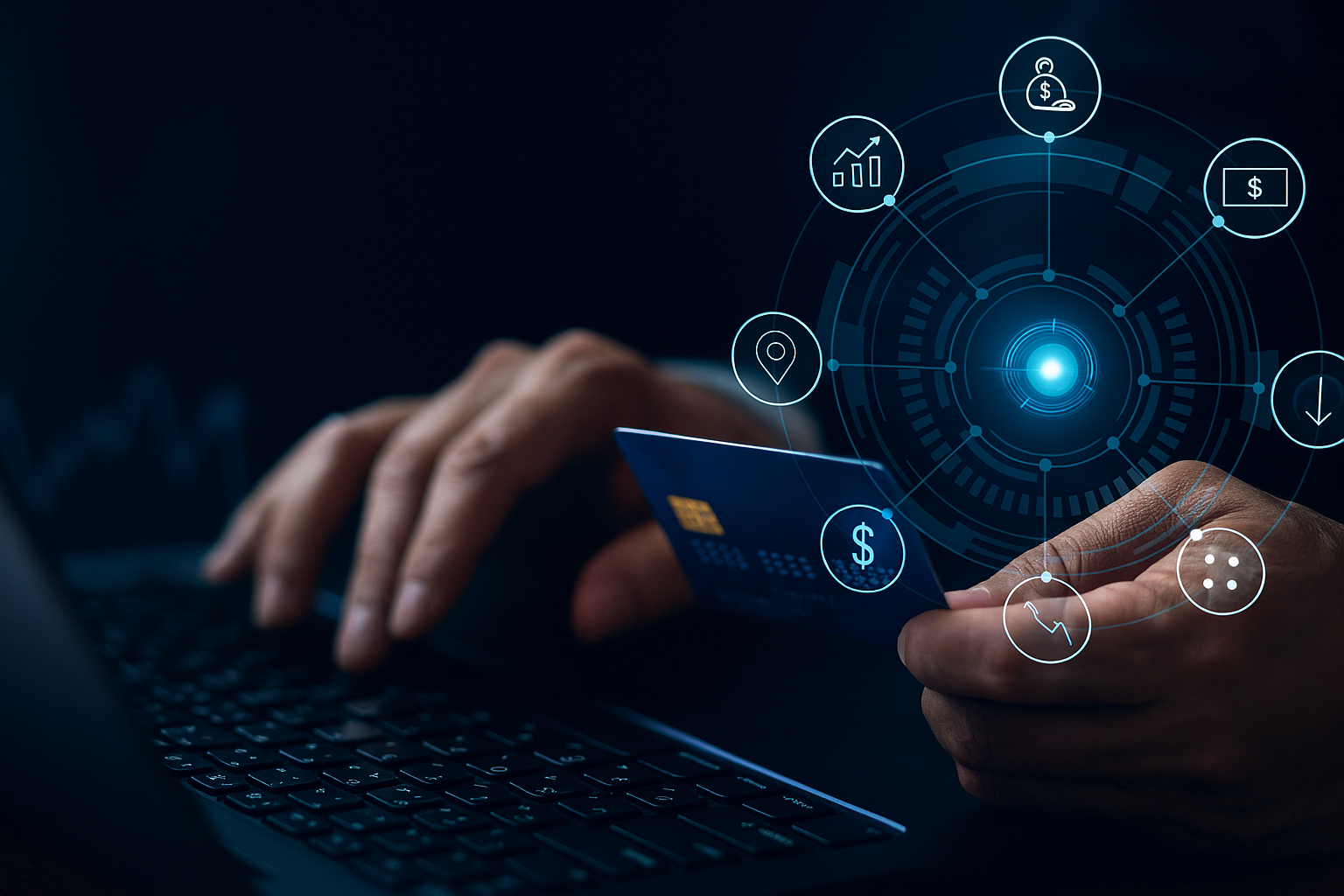How Payment Gateway & Processors Earn Revenue?
4 Min
October 13, 2025
Author:
Garry


In today’s digital-first economy, online payments are the heart of every business. Whether you buy clothes online, book a flight, or subscribe to a streaming platform, a payment gateway and processor handle your money in the background.
But have you ever wondered how these companies make money for themselves? Every time you make a payment, a small slice of that amount goes toward transaction fees and service charges. These fees are the main way payment gateways and processors earn their revenue.
In this article, we’ll explain what payment gateways and processors are, how they earn, what their pricing models look like, and why choosing a reliable solution like PayFirmly can make all the difference for your business.
What is a Payment Gateway?
A payment gateway is an online system that ensures security and facilitates transactions between buyers and sellers. It transmits the payment details to the bank for approval in a secure manner and then notifies the merchant if the transaction was accepted or declined.
To put it simply, it is a third party that safeguards the sensitive data, such as card numbers, by applying encryption techniques. The absence of such a service would mean that companies could not safely accept card payments made online.
For example, if you are making an online purchase and you provide your card information, the gateway will first encrypt the information and then check with the bank, and if everything is ok, the purchase will be confirmed. It all occurs in a matter of seconds.
An example of this is PayFirmly, which is a provider of this secure service ensuring both transaction safety and compliance with industry security standards (PCI-DSS).
What is a Payment Processor?
A payment processor is a system or mechanism that facilitates the transfer of money between accounts. The processor does the actual transaction while the gateway sends the payment information.
Here’s the process:
- The first step is that the processor receives the encrypted payment information from the gateway.
- Then, it queries the bank of customer to confirm if there are sufficient funds.
- The bank then gives the go-ahead or shuts down the transaction.
- If the transaction is given the green light, the next step is the processor moving the money to the account of the seller.
In short, the processor guarantees that the payment is made from the buyer to the seller securely and straightforwardly.
A few companies, like PayFirmly, offer both the gateway and the processor as a single service for making payments easier.
How Payment Gateways & Processors Generate Revenue?
Payment gateways and processors handle millions of transactions daily, but their business models rely on several consistent revenue streams. Let’s explore the main ways they make money.
- Transaction Fees (TDR / MDR)
Every time a customer pays through a card, UPI, wallet, or online transfer, the gateway or processor takes a small fee from the merchant. This is usually a percentage of the total transaction amount, called the Transaction Discount Rate (TDR) or Merchant Discount Rate (MDR).
For example, if a payment gateway charges 2% on a ₹1,000 transaction, it earns ₹20 from that sale.
This is the most common and significant income source for payment gateways and processors. The rate often depends on:
- Type of business (low-risk or high-risk)
- Payment method (credit card, debit card, wallet, etc.)
- The transaction volume of the merchant
PayFirmly, for example, offers competitive transaction fees with complete transparency—no hidden costs or surprise deductions.
- Setup and Maintenance Fees
Some payment gateways charge a one-time setup fee to onboard new merchants. This covers the cost of integrating the payment system with the merchant’s website or app.
Additionally, many charge annual or monthly maintenance fees to ensure continued access, updates, and customer support. While some gateways waive these fees to attract small businesses, others use them as a steady income stream.
PayFirmly offers a straightforward, no-surprise setup process. Many small and medium businesses choose it because it keeps initial costs low without cutting back on reliability.
- Cross-Border and Currency Conversion Fees
Global eCommerce has created new revenue opportunities for payment processors. When customers pay in a foreign currency, gateways often charge foreign exchange or cross-border fees.
These fees cover:
- Currency conversion rates
- International compliance and settlement costs
- Higher fraud risk in international transactions
For example, if a U.S. customer buys from an Indian merchant, the payment gateway may charge an extra 1–3% for processing and converting the amount.
PayFirmly supports multiple currencies and offers competitive FX rates, helping merchants expand globally without losing too much on conversions.
- Chargeback and Refund Fees
A chargeback occurs when a customer challenges a credit card payment and requests that the banking institution recover the money. The handling of such cases involves extra time and resources; thus, gateways set a chargeback fee on merchants for every dispute, regardless of whether it is valid or not.
Besides, refunds entail processing costs. Though these are measures to protect the customers against fraud, they have also turned out to be a source of revenue for the gateways.
PayFirmly reduces the amount of chargeback losses by utilizing advanced tools for fraud detection that detect suspicious transactions at an early stage, thus protecting both the merchants and the customers.
- Value-Added Services
Payment gateways don’t just move money—they help businesses grow. Many offer premium features such as:
- Subscription billing (for recurring payments)
- Detailed analytics and reporting
- Invoice generation
- Automated settlements
- Custom checkout designs
These services often come under paid plans or higher-tier packages. For example, a small business might use a basic plan for regular transactions, while a subscription-based business might pay more for recurring billing and analytics.
PayFirmly’s business dashboard includes all these features, empowering merchants to track, manage, and optimize payments easily.
- Partnerships and White-Label Solutions
Some gateways and processors earn by licensing their technology to other financial institutions or companies under white-label agreements. In these deals, another brand uses the gateway’s infrastructure under its own name.
The payment company then earns from licensing fees, maintenance, or revenue sharing. This model helps gateways scale faster without directly onboarding thousands of small merchants. It’s a win-win: the partner gets a ready-made payment system, and the gateway earns steady revenue from usage.
Payment Gateway & Processor Pricing Models Explained
Payment processors almost always determine their pricing structure according to the type and size of the business they are working with. I will start with the easiest to access models.
- Flat-Rate Pricing
This model can be considered the clearest of all. Merchants are charged a constant percentage (for example, 2.5%) regardless of the number of cards used and the brands of the cards.
- Pros: Super easy to understand; there are no surprises regarding costs.
- Cons: More expensive when dealing with a large volume of transactions.
PayFirmly thus adopts this open structure for small businesses to ease accounting, like in the case of big enterprises.
- Interchange-Plus Pricing
This model separates the interchange fee (the cost paid to the card network, like Visa or Mastercard) and the markup fee (the processor’s own margin).
- Pros: Offers transparency for high-volume businesses.
- Cons: Slightly more complex to calculate.
- Tiered Pricing
Here, transactions are divided into categories like “qualified,” “mid-qualified,” and “non-qualified,” depending on card type or payment risk. Each tier has a different fee percentage.
- Pros: Can reward low-risk merchants with better rates.
- Cons: Hard to predict total costs.
- Custom Enterprise Pricing
Large enterprises or marketplaces often negotiate special contracts. Their rates depend on transaction volume, risk level, integration type, and service usage.
PayFirmly offers such custom pricing for high-volume merchants, combining flexibility with cost-effectiveness.
- Hybrid Models
Some gateways mix flat-rate and subscription models. For example, they may charge ₹1,000/month plus a lower per-transaction fee. This approach helps stabilize income while keeping variable costs low for growing merchants.
Emerging Trends in Payment Gateways
The digital payments universe is changing rapidly due to the influence of new technologies, regulations, and changing consumer expectations. Payment gateways are integrating advanced technologies to accelerate, make more secure, and facilitate transactions. The major trends are:
- Buy Now, Pay Later (BNPL) Integration
Buy Now, Pay Later (BNPL) has transformed online shopping by letting customers split payments into interest-free installments, boosting conversion rates and order values. Payment gateways are integrating BNPL options like Klarna, Afterpay, and Affirm at checkout, enhancing customer convenience and generating revenue through commission or transaction-sharing models.
Why It Matters:
- Boosts customer affordability and retention
- Expands merchant reach
- Opens new monetization channels for gateways
- Tokenized Payments
Security remains at the heart of digital transactions. Tokenization replaces sensitive card details with a unique digital identifier (token), ensuring that customer data is never exposed during a transaction.
Payment gateways are increasingly leveraging network tokenization from card networks like Visa and Mastercard to minimize fraud risk and simplify recurring payments.
Benefits of Tokenization:
- Protects against data breaches
- Enables faster repeat payments
- Enhances compliance with PCI-DSS standards
In short, tokenized payments are becoming the gold standard for digital security and seamless checkout experiences.
- AI & Machine Learning for Fraud Detection
As online transactions overflow, so does fraud. To fight his, payment gateways are deploying AI and machine learning (ML) models that analyze transaction behavior in real time.
These systems can detect unusual patterns, flag high-risk transactions, and automatically block fraudulent activity—without disrupting genuine payments.
Key Advantages:
- Real-time fraud prevention
- Lower false declines
- Adaptive systems that learn from data over time
AI-powered fraud detection doesn’t just save money—it builds merchant and customer trust, a crucial factor in today’s competitive payment ecosystem.
- Crypto Acceptance (Where Legal)
Cryptocurrency is gradually entering the mainstream, and payment gateways are taking note. Many now support crypto-to-fiat conversions, enabling merchants to accept Bitcoin, Ethereum, and stablecoins while still receiving payouts in traditional currencies.
Some fintech players even offer multi-currency wallets and blockchain-based settlements for faster cross-border payments.
Challenges & Opportunities:
- Legal and regulatory restrictions vary by country
- Volatility in crypto markets
- Yet, massive potential for global reach and lower transaction fees
Crypto acceptance reflects a broader trend toward borderless, decentralized payment ecosystems an area that payment gateways are strategically exploring.
Conclusion
Payment gateways and processors make money in different ways, such as charging fees based on transactions, subscription models, and providing additional services. Although their main income is from the per-transaction fees, modern financial technology companies are turning more and more to data, analytics, and premium tools to increase their profits and offer merchants extra benefits.
Knowing these methods enables companies to cut costs and select payment partners wisely this way, they can have both security and profit in their digital payment process.
Secure Crypto Payment Orchestration & Processor with PayFirmly
The future of adult payment processing is intelligent, compliant, and built around you.
Join leading adult brands using PayFirmly to boost approvals, cut fees, and simplify multi-processor management — all from one secure dashboard.






